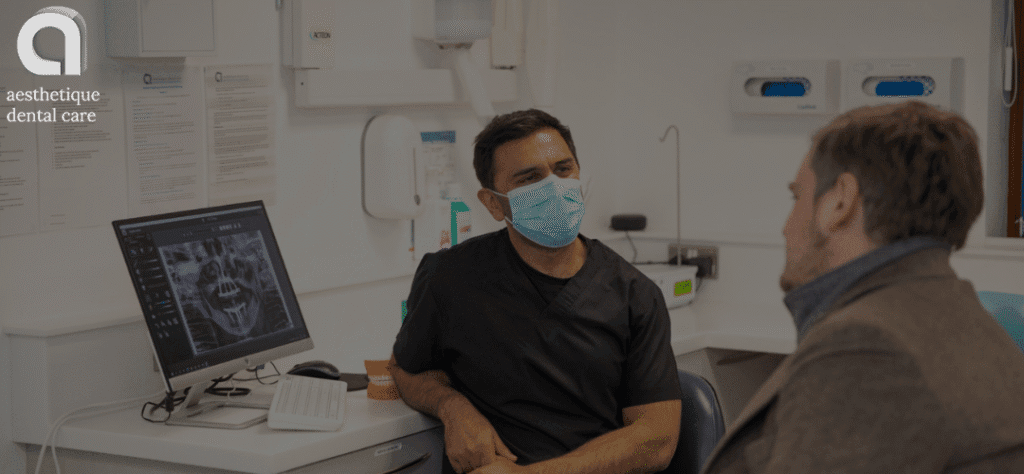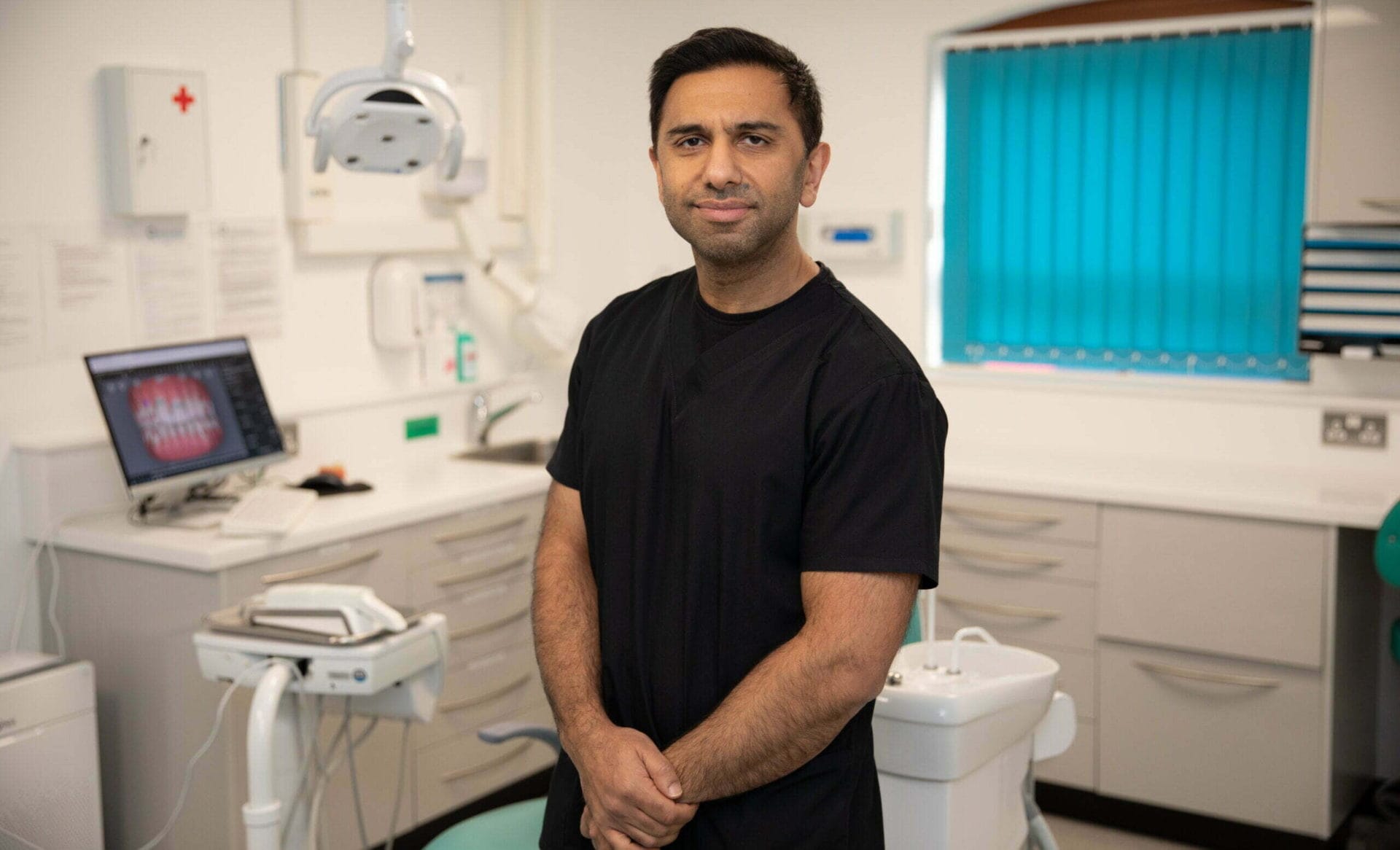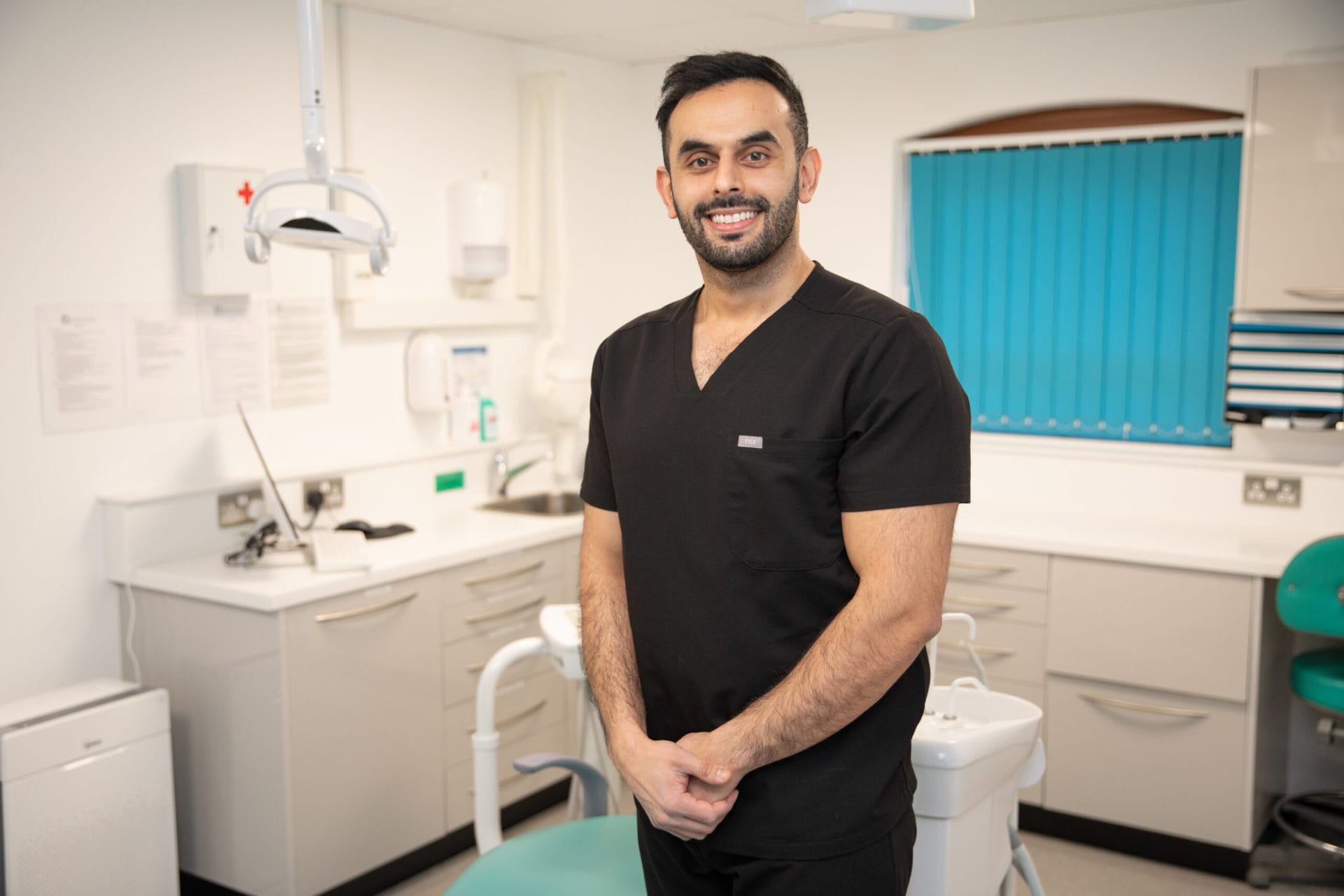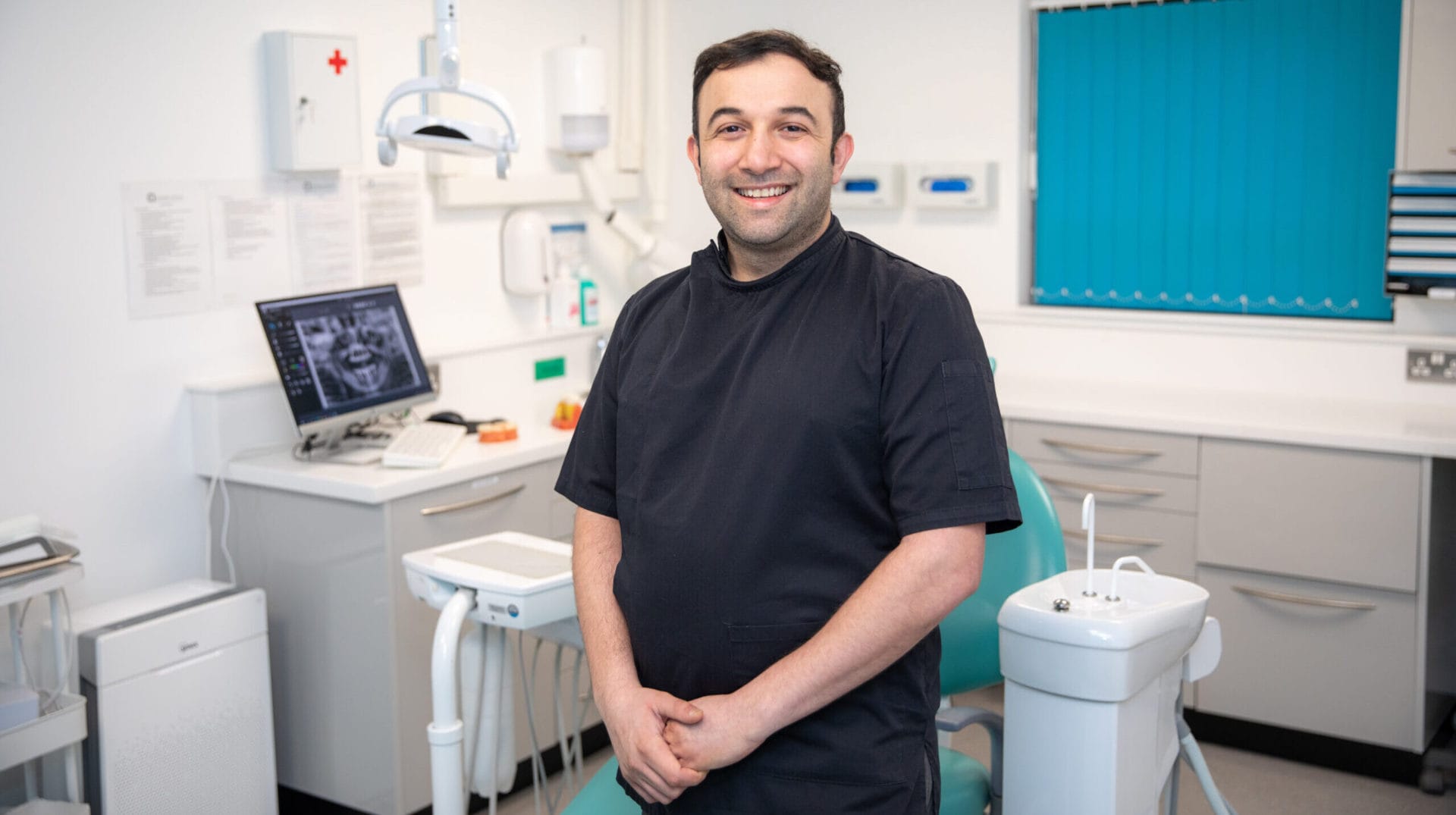A clear, friendly guide from Aesthetique Dental Care Leeds
If you’re preparing for wisdom tooth extraction or you’ve just had one removed, you’re likely wondering how long things take to settle and what’s normal. At Aesthetique Dental Care, our oral surgeons and dentists support patients through extracted wisdom tooth healing every week. This guide explains the healing stages of extracted tooth sites in plain English — day by day — with simple tips for comfort, clear red flags, and links to book help if you need it.
We’ll also point you to trusted resources such as the Colgate guide to extraction healing time and the Cleveland Clinic overview of tooth extraction. And if you’re in Leeds and need a friendly team to assess a stubborn wisdom tooth or a sore socket today, our pages for Wisdom Teeth and the Emergency Dentist service are the fastest way to reach us.

Why wisdom teeth are removed
Wisdom tooth extraction is common and usually carried out to:
- Treat repeated infection or swelling around a partially erupted tooth
- Remove a tooth that’s decayed or broken and hard to clean
- Stop food trapping, bad breath or gum soreness behind the molars
- Protect the healthy molar in front from damage
- Support orthodontic or restorative plans
Not every wisdom tooth needs to come out. At your consultation we check your mouth, review X-rays, and set out the pros and cons. If a back tooth next to the wisdom tooth is the real problem, we may discuss alternatives such as root canal treatment to save it. If removal is best, we’ll plan your care so extracted wisdom tooth healing is as smooth as possible.
What happens on the day
At Aesthetique Dental Care, your visit is calm and well-organised:
- Pre-op chat. We confirm your medical history and answer questions.
- Anaesthetic. The area is completely numbed; you’ll feel pressure, not pain.
- Removal. The tooth is gently eased out. Sometimes a small stitch is placed.
- Bite on gauze. This helps form a healthy blood clot — the first step in the healing stages of extracted tooth sockets.
- Aftercare pack. You leave with written instructions, a cool pack and our contact details.
If you’re in pain before you’ve even booked, use our Emergency Dentist (Leeds) page to arrange urgent help.
Healing timeline: day-by-day and week-by-week
Everyone heals at their own pace, but this is a helpful guide to extracted wisdom tooth healing. (If your dentist has given specific instructions, follow those first.)
First 24 hours
- What you’ll feel: Numbness for a few hours, then a dull ache. A little oozing is normal.
- What to do:
- Bite firmly on gauze for 30–60 minutes.
- Rest, head slightly raised.
- Use prescribed or over-the-counter pain relief as directed.
- Apply a wrapped ice pack on/off (10 minutes each) to limit swelling.
- Avoid smoking and alcohol — they disrupt clot formation.
- No rinsing yet; it can wash out the clot.
- Bite firmly on gauze for 30–60 minutes.
Days 2–3
- What you’ll feel: Swelling often peaks at 48–72 hours; jaw stiffness and mild bruising can appear.
- What to do:
- Start warm saltwater rinses after meals and at bedtime (½ teaspoon of salt in a mug of warm water). Tilt to the side and let it bathe the area — no vigorous swishing.
- Continue pain relief as advised.
- Eat soft, cool or lukewarm foods (yoghurt, mashed potato, scrambled eggs, soups that have cooled).
- Brush the rest of your teeth normally; keep the brush away from the socket.
- Start warm saltwater rinses after meals and at bedtime (½ teaspoon of salt in a mug of warm water). Tilt to the side and let it bathe the area — no vigorous swishing.
Days 4–7
- What you’ll feel: Swelling and stiffness begin to settle. You may notice itching or “tightness” as tissues knit.
- What to do:
- Keep saltwater rinses going.
- Introduce gentle brushing near the site with a soft brush if advised.
- Gradually broaden your diet (still avoid nuts, seeds and spicy foods).
- Keep saltwater rinses going.
Week 2
- What you’ll feel: Soreness fades; a soft, pale layer (granulation tissue) covers the socket. If you had stitches, they may be removed or dissolve on their own.
- What to do:
- Keep cleaning steady and thorough.
- Normal activities resume. Heavy gym sessions are fine if you feel comfortable and the socket is no longer tender.
- Keep cleaning steady and thorough.
Weeks 3–4
- What you’ll feel: Gum tissue is stronger; small ridges are normal as bone reshapes.
- What to do:
- Keep up excellent hygiene and normal diet.
- If tiny flakes of bone (sequestra) appear, they often shed on their own. If it’s sharp or annoying, contact us.
- Keep up excellent hygiene and normal diet.
Months 2–6
- What you’ll feel: The socket bone rebuilds from the base upwards. Full bony healing can take a few months. The gum surface is usually fully closed well before this.
- What to do:
- Nothing special — just routine brushing, interdental cleaning and check-ups.
- Nothing special — just routine brushing, interdental cleaning and check-ups.
For a second opinion on what’s normal, the Colgate and Cleveland Clinic articles echo the same broad timeframe as above.
What not to do after removal
- Don’t smoke for at least 72 hours (longer is better).
- Don’t poke the socket with fingers, tongue or cutlery.
- Don’t spit or rinse forcefully in the first 24 hours.
- Don’t drink through straws — suction can disturb the clot.
- Don’t ignore rising pain after a few calm days; that can be a sign of dry socket.
If in doubt, call our team via the Wisdom Teeth page or, if it’s urgent, use Emergency Dentist – Leeds.
Pain, swelling and bruising: what’s normal?
- Pain: A steady ache that eases day by day is normal. Increasing pain on days 3–5 can suggest dry socket (see below).
- Swelling: Peaks by day 2–3 and then softens.
- Bruising: Harmless and may shift colour over a week.
- Stiff jaw: Gentle warm compresses and small mouth-opening exercises help.
Good pain control and careful home care make extracted wisdom tooth healing much more comfortable.
Dry socket (alveolar osteitis): the key facts
Dry socket happens when the blood clot dissolves or dislodges, exposing bone. It’s uncommon but very uncomfortable.
Typical signs (often days 3–5):
- Throbbing pain that radiates to the ear, eye or temple
- Bad taste or odour
- Little or no visible clot in the socket
What to do: Contact us promptly. We’ll clean the area, place a soothing dressing and review pain relief. Most people feel much better within 24–48 hours after treatment. Our Emergency Dentist page has up-to-date booking options if the socket flares outside routine hours.
Bleeding: how to handle it calmly
A little oozing is common on day one. To stop a trickle later:
- Roll clean gauze (or a clean, folded handkerchief) into a firm pad.
- Place it directly over the socket.
- Bite down steadily for 30–45 minutes.
- Rest, head elevated.
- Avoid hot drinks and rinsing for an hour afterwards.
If bleeding remains brisk or you’re worried, contact us through Aesthetique Dental Care or the Emergency Dentist page.
Eating, drinking and oral hygiene
First day: cool, soft foods (yoghurt, smoothies with a spoon, mashed banana, soup that has cooled).
Days 2–3: add scrambled eggs, soft pasta, well-cooked vegetables.
By one week: most people return to a normal diet, chewing on the opposite side at first.
Cleaning:
- Brush the other teeth as usual from day one.
- Start gentle brushing near the site after 48–72 hours if comfortable.
- Rinse with warm saltwater after meals from day two onwards.
- Interdental brushes and floss are fine away from the socket; add them back near the site once it feels settled.
A clean mouth heals faster — one of the most important healing stages of extracted tooth care.
Stitches, bone chips and other common questions
- Stitches (sutures): Some dissolve by themselves in 7–10 days; others we remove at review. You may feel a tiny “tail” — leave it alone.
- Bone chips (sequestra): Small flakes can work their way out as bone remodelling happens. They’re harmless; call if sharp.
- Upper wisdom teeth and sinuses: You might feel a brief, odd “pressure” high in the cheek. If you notice fluid passing between nose and mouth, or persistent sinus symptoms, contact us for a check.
- Antibiotics: Not usually needed after routine wisdom tooth extraction. We prescribe when there’s active infection or specific medical reasons.
When to contact us urgently
Call Aesthetique straight away if you notice:
- Fever, spreading facial swelling or difficulty swallowing
- Worsening pain after a few comfortable days
- Persistent bleeding that doesn’t slow with firm pressure
- Numbness that hasn’t improved after 24 hours
- A bad taste with discharge from the socket
Fast help is available on Emergency Dentist – Leeds. If you’re still choosing a provider for planned removal, you’ll find more about our approach and technology on Wisdom Teeth at Aesthetique.
Our approach at Aesthetique: experience you can trust
- Our clinicians remove wisdom teeth and manage post-op care every week. From simple extractions to surgical cases, we plan for comfort and predictable recovery.
- We follow current clinical guidance, use digital imaging for accurate planning, and tailor aftercare to your medical history and lifestyle.
- We provide clear written plans, consent and post-op instructions. You can read more across our site, including Wisdom Teeth, Emergency Dentist – Leeds and Root Canal Treatment (useful when saving other molars is the priority).
- We explain options and costs in plain English and we’re easy to reach if you need reassurance during extracted wisdom tooth healing.
How we help you prepare (and heal faster)
Before your appointment
- Stock up on soft foods and over-the-counter pain relief (as advised).
- Arrange a lift home if sedation is planned.
- Skip alcohol the day before and after.
- If you smoke, plan a smoke-free window — it really helps healing.
After your appointment
- Set alarms for pain relief in the first 48 hours.
- Use ice packs or a bag of frozen peas, wrapped in a cloth.
- Keep saltwater rinses handy in the kitchen and bathroom.
- Take it easy: avoid heavy lifting for 48–72 hours.
- Trace your progress against the timeline above — steady improvement is the goal.
If you’re unsure at any point, call our reception on the Aesthetique homepage or the numbers listed on the Emergency Dentist page.
Alternatives and related treatments
- Keeping a wisdom tooth: If the tooth is fully erupted, easy to clean and symptom-free, we often monitor rather than remove.
- Treating the neighbouring molar: If pain is coming from the second molar, saving it with root canal treatment may be the right call.
- Orthodontic or restorative plans: Sometimes removing a problematic wisdom tooth makes future treatment easier and more predictable.
We’ll always explain why wisdom tooth extraction is (or isn’t) recommended in your case.
Quick reference: your first week checklist
- Day 0: bite on gauze; rest; ice on/off; no rinsing.
- Day 1–2: start warm saltwater soaks; soft, cool foods; avoid straws.
- Day 2–3: expect peak swelling; continue pain relief; short, gentle mouth-opening exercises.
- Day 4–7: swelling easing; keep rinsing; broaden diet when comfortable.
- End of week: many people return fully to normal routines.
Keep this list handy; it covers the most important healing stages of extracted tooth care.
Ready for friendly, expert care in Leeds?
Whether you’re planning wisdom tooth extraction or need help with socket pain today, we’re here to make things clear and comfortable. Explore our Wisdom Teeth page, keep our Emergency Dentist link handy, and remember we can also help save other molars with root canal treatment when appropriate.
If you take one message away, let it be this: with the right advice and simple home care, extracted wisdom tooth healing is steady and predictable — and you’re never on your own while you recover.
Patients frequently ask us
How long does it take for a wisdom tooth socket to heal?
Gums usually close over within 2–3 weeks, while the bone underneath rebuilds over several months. Most people feel “back to normal” after 7–10 days. This matches the broad timelines outlined by both Colgate and the Cleveland Clinic. If your recovery doesn’t follow a gentle upward trend, get in touch.
What’s normal pain — and what isn’t?
A dull ache settling day by day is expected after wisdom tooth extraction. Pain that worsens on days 3–5, especially with bad taste or smell, may be dry socket. We can treat this quickly; book through Emergency Dentist – Leeds.
When can I brush and rinse?
Brush the rest of your mouth as usual on day one. Avoid the socket with the brush for 48–72 hours, then reintroduce gentle cleaning. Start warm saltwater rinses from day two. Good cleaning speeds extracted wisdom tooth healing and keeps the area comfortable.
What can I eat after removal?
Begin with soft, cool foods (yoghurt, smoothies with a spoon, mashed potato). Add eggs, soft pasta and well-cooked veg over the next few days. Chew on the opposite side at first and stay well-hydrated.
Who should I contact if something feels wrong?
If bleeding won’t slow, pain spikes after a few calm days, or you’re worried, call us. Quick help is at Emergency Dentist – Leeds. For planned assessments and second opinions, see Wisdom Teeth at Aesthetique and our main site aesthetique.me.uk.














